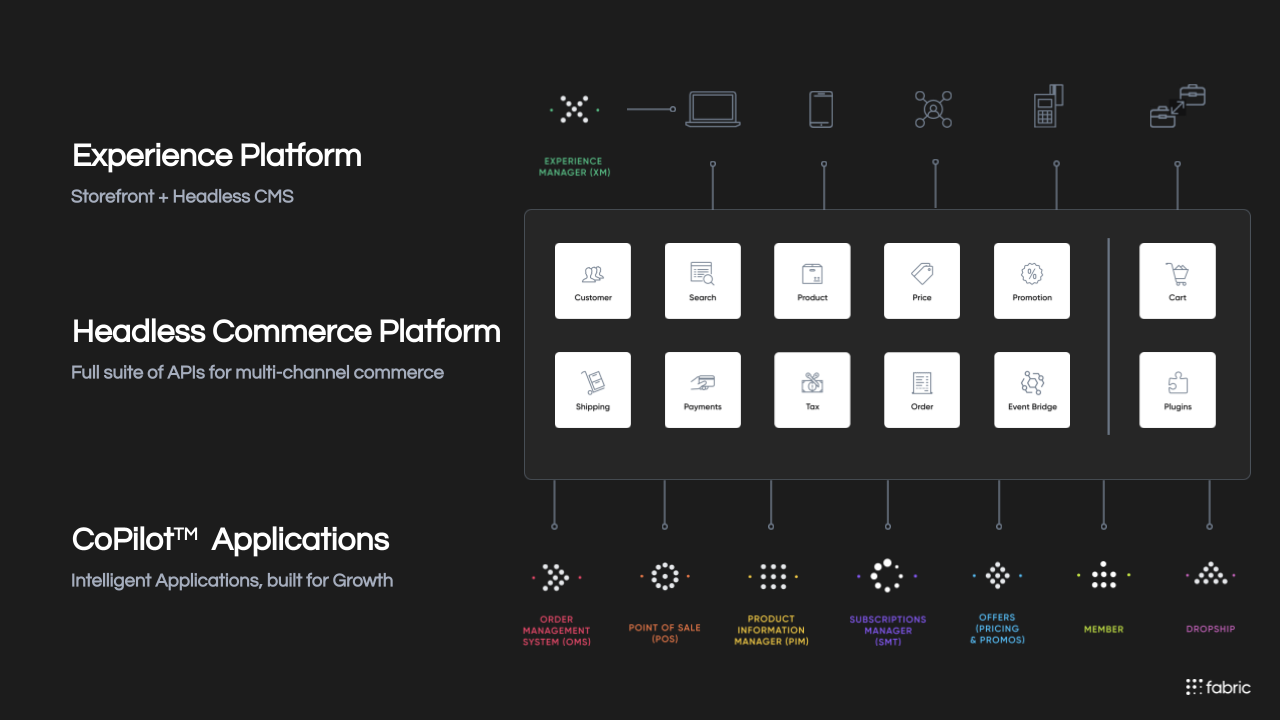Can CIOs Enable the Next Chapter of Digital Commerce?

The lack of focus on the customer and the inability to move fast is why retailers and B2B commerce companies are struggling to keep up. This is especially prevalent in companies that still consider technology a cost rather than a means of innovation. If an organization’s customer-facing technology is being run by CIOs and not by a Product organization, they will fall behind.
Some CIOs are starting to reinvent the outdated IT organization but there’s still a long way to go…
During the AWS re:invent summit last year, Amazon’s new CEO Andy Jassy mentioned that only 17% of Fortune 500 companies from 1970 remain on the Fortune 500 list today, and only 50% of Fortune 500 companies from 2000 remain on the list. His point was that it’s very hard to build a business that sustains for a long period of time. He then presented eight tips to help businesses reinvent the outdated IT organization and grow.
8 tips from #aws CEO @ajassy on building a culture of reinvention
1) Leaders must want to #reinvent
2) Must be willing to cannibalize
3) Hire hungry talent
4) Solve customer problems
5) Move fast
6) Don’t “complexify”
7) Use broadest/deepest toolset
8) Have aggressive goals— Fabric (@fabric_commerce) February 2, 2021
Retailers and B2B commerce businesses that want to thrive in this new digital era must start checking off these boxes, namely the customer problem box that relates to creating better customer experiences. The CIO must also be willing to reinvent an outdated budget-focused, project-driven organization and shift to a customer-focused, product-driven organization.
Unfortunately, many CIOs today are not willing to do this, or they don’t know how. The CIO either feels complacent or trapped in a reactive and rigid system of IT procurement. In short, many CIOs are helping the business survive rather than thrive. In this article, I want to shed light on this broken system while sharing ideas for how CIOs can remain relevant.
[toc-embed headline=”How to avoid becoming a Lumbergh”]
How to avoid becoming a Lumbergh
Lumbergh (n.) – a CIO that blocks innovation, creativity, and reinvention (like Bill Lumbergh in the movie Office Space)
Rethink the role of CIO
With cloud-based technologies and the API economy, the role of the traditional CIO is becoming less relevant. In the past, you had on-prem infrastructure to host all your servers and the CIO was the person with the server farms, rubbing shoulders with Cisco and Dell. But with the advent of the cloud and API-driven applications this is no longer necessary. Today, networking, security, and database management can be handled in a few clicks, which is why you’ll find most enterprises today using cloud computing.
Yet, for many companies, IT still basically rules the world as the CIO controls much of what the business can and can’t do. It’s not uncommon to have someone in the business come up with an idea and the first thing they hear back is IT can’t do it. Every decision goes through the IT filter which is a very backward way of operating.
To be clear, this is not entirely the CIOs fault. The CEO is responsible for ensuring there is a clear product-driven mandate and that IT is not the blocker on customer experience decisions. Unfortunately, in most legacy organizations, IT runs the show.
This is what happens within large companies that have traditionally made a lot of money and so have no desire to do anything new. For example, Walmart didn’t hire a CTO to help create a more product- and customer-driven business for years. And look at them now, scrambling to catch up with Amazon, a company where everything revolves around the customer experience and the ability to make rapid changes based on market demand.
When I joined Staples in 2013 we had a CIO and traditional IT organization. But we didn’t let this get in the way of innovation. The leadership team, including the CIO, was willing to change and we stood up an entire digital/product organization to own the customer experience end-to-end. The CIO supported this and we joined forces to create a B2B e-commerce growth engine that included a full suite of omnichannel capabilities and a marketplace platform (Staples Exchange). We also brought a large part of our outsourced technology for Copy and Print business in-house.
Challenge groupthink with innovative ideas
Another reason retailers and B2B commerce companies are struggling is because they are very consensus-driven and rely on groupthink. Organizations that are stuck in a consensus mindset never advance because they’re always looking for the group to greenlight their game plan.
So what happens when a CIO breaks the consensus and makes the call to adopt more scalable technology like microservices-based commerce and headless commerce? They’re essentially putting their entire job on the line. If the company makes the move and it doesn’t work, the CIO is accountable. So it’s a very risky proposition and understandable why many IT organizations haven’t changed. It’s an anti-flywheel.
But this is where consensus-driven thinking can be taken advantage of. If you have the CEO supporting the CIO, asking them how they can help make these innovations, you can create an environment where IT organizations act based solely on what’s best for the business, which is ultimately what’s best for the customer.
Adopt a modern commerce platform
According to Andy Jassy, to remain relevant and grow you must use the broadest and deepest toolsets (#7 in list above). However, many retailers and B2B commerce companies are using primitive commerce platforms from IBM, Oracle, Salesforce, and SAP. These platforms are incapable of creating meaningful customer experiences at scale.
I experienced issues with these platforms firsthand at Staples. When I joined, we were using the monolithic commerce platform IBM Websphere and our SKUs couldn’t be more than six digits long. I asked why and was told “because our system can’t handle it”. This was unacceptable as we had our vision on scaling to support 1 million SKUs.
Just like we abandoned our traditional IT organization, we abandoned this legacy platform and moved to a service-oriented architecture (SOA). Back then we had to rely on custom builds and a variety of open source software like Spring Boot to make this happen. Fortunately, retailers and B2B commerce companies don’t have to do this today. Instead, they can leverage headless commerce platforms like Fabric that offer commerce APIs and microservices for building modern buying experience at scale.
[toc-embed headline=”Trade TPS reports for Fabric”]
Trade TPS reports for Fabric
You can think of Fabric as the AWS of commerce. We provide the building blocks of modern commerce experiences. I joined Fabric to help level the playing field for traditional retailers and B2B businesses after spending time buying enterprise SaaS and running digital/product organizations at Amazon and Staples.
Fabric helps companies innovate without the fear of disaster that usually accompanies moving from traditional IT systems to a more modern tech stack. We believe replatforming is not the right way to go and we give retailers and B2B companies the tools to take another approach. With a suite of commerce services that integrate with your current architecture, you can make changes without bringing the whole system down. Some of these services include PIM, OMS, and Offers.
Each one of these products is broken down further into microservices for ultimate flexibility. For instance, our order management system (OMS) is broken down into cart, checkout, wishlist, and other microservices. Each of these microservices has an API and operates independently yet can integrate with other Fabric services as well as custom apps and third-party SaaS.

This microservices-based approach is nothing new, but for the first time ever commerce microservices are emerging as SaaS and making it easier for companies with traditional IT organizations to evolve. The only question is: will you make the switch? Many of your competitors already have. To survive this next generation of transformation, you will need to do the same.
Editor’s Note: A version of this article was originally published on LinkedIn.

Board of Directors @ fabric. Previously @ Google, Amazon, Staples, eBay, and Groupon.